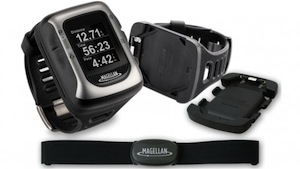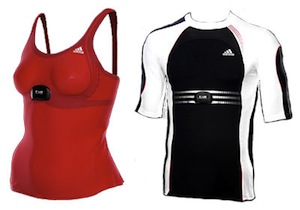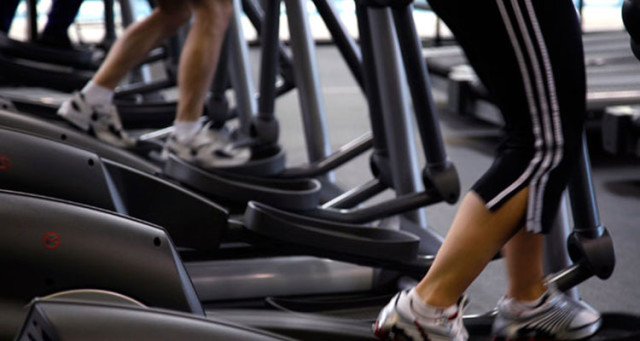The sports equipment becomes more sophisticated, and it is logical to expect that its impact in the fitness increase more and more. In gyms is normal to try to capture the customer with a number of technological gadgets that integrate the equipment normally ” non-intelligent “, but today even the sport at the amateur level with the sole purpose of helping one’s health can take advantage of many proposals based on electronic news and information, some of which ten years ago might have seemed science fiction.
The Fitness Equipment can be classified according to the aim pursued :
- Play – Allows you to increase the popularity of the subject towards the sport.
- Workout – Allows you to better define your training.
- Scientific – Provides a set of data for the activity that is taking place, both related to the subject and the surrounding environment.
Often the goals 2 and 3 are difficult to separate because the data provided is used or could be used for training and serves as a workout that is not scientific is not very significant, if not harmful. While the equipment play (for example, one that varies in the scenario shown who does indoor cycling) is typically always positive, the workout and / or scientific most of the times only serves to attract that part (not negligible) of customers that is sensitive to technological charm.
 The Data Used for?
The Data Used for?
Unfortunately, those who are sensitive to the latest technological innovations often are too much and never arises the question that headlines this paragraph. To understand, ” too sensitive ” means that falls victim to a sea of information that are so approximated as to be useless. The manufacturer plays on the big words, concepts such as electronics, computers, automatic, etc…. look for the maximum of scientific credibility and avant-garde.
The information is not needed.
- When it is approximated.
- When prevents us know.
The approximation it has in all those cases in which.
- Using formulas that have a large dispersion (standard deviation) around the mean value of the population.
- The technology has not yet totally solved the problem.
- We simulate a real situation badly.
Point 1. is shown for example, in the calculation of body fat or calories burned from weight, sex, height, and a circuit impedenziometric at low cost, from the calculation of VO2max by cardiac data, calories burned, maximum heart rate, etc…. Very often, would be sufficient for a calculator and a formula derived from a book of sports physiology to have the data with the same approximation. The damage produced by the equipment is to believe the person to have in his hands a precise figure. Many weight-loss plans fail because the exercise bike or treadmill used to provide a calculation of calories considerably overestimated.
Point 2. it is found, for example, in the GPS unit still poorer.
Point 3. is typical of a simulation of an outside activity indoors. A classic example is the data on mileage and speed provided by the treadmill and bike unrealistic. The producer would only marginally ensure that there is compliance with real data, and often a little help can gratify the subject. So there are untrained sedentary women who go 30 km/h on the exercise bike that run at 15 km/h on the carpet with disarming ease. On the other hand, there are also athletes of a certain thickness that detect a monstrous difficulty in getting on the gym equipment that they get the same results in the street.
Negative is also the situation in which the equipment gives accurate data. That in some way help the laziness of the subject to avoid the trouble of understanding each other. A classic example is the heart-rate monitor. If the exact figure was often the use made of it is wrong :
- It is used to ” avoid exaggeration ” ; typical case in which the personal trainer does not want to investigate the actual health condition of the subject (a healthy heart can be pushed to the maximum)
- It is used to spread misconceptions (for weight loss must not exceed certain heart rates) but allow the subject (usually a sedentary soft with a low threshold of pain to fatigue) to believe that a sport is the sweet maximum.
It is quite evident that the matter of the heart rate detected by the heart-rate monitor can be trivially replaced by the breathing of the subject, for example, consider this classification :
- Easy : the subject speaks easily and continuously.
- Normal (sportingly speaking) : the subject paddle easily enough, but the continuity costs a minimum of concentration.
- Committed : the subject can talk, but sometimes.
- Breathless : the subject is unable to speak unless decreasing the intensity of the effort.
Realistically, for a subject that has as maximum heart rate 180, each of these classifications is equivalent to a range of about 15 pulses (for example, 130 easy, normal 145 etc….). The subject, knowing, ever be able to understand, for example, where it is placed when it is between easy and normal, failing, for example, pulses of about 5 compared to the real data.
After this, analysis believed that cardio is a really fundamental? Who will answer yes, you will probably also be convinced that the only enough data to calibrate heart rate training (serious error: no professional would use this data only) or try to integrate it with a system that measures pulmonary ventilation.
Another detects the concentration of lactate (a small probe attached to a lobe of the ear that reads the value from the blood) and a final (quiet, does not yet exist) that performs a reading of muscle glycogen (ie how much fuel is left to the athlete). Total dependence on technology. It is more challenging to learn to know?
The Fitness Equipment – Some Examples

Adidas and Nike and Polar against Apple. The two major sportswear companies have placed on the market very sophisticated equipment, allying with two technology partners.
AdiSTAR Fusion – The system consists of a heart-rate monitor (Polar RS800, heart rate, distance, speed, route profile, calories burned; acts thanks to the sensor WearLink be attached to the vest, to the Polar S3 Stride integrated into the shoe and using the ProTrainer software to analyze and plan your training), Vest Adidas Adistar Fusion (3D ForMotion fabric with elastic and breathable ClimaCool technology, with ECG sensor integrated in the fabric) and the shoe Adidas Adistar Fusion (QuickStrike sole, EVA midsole with double insert adiPRENE+ cushioning and stabilizer Torsion System).
NikePlus – The system is based on the Nike Air Zoom Moire, whose base is a pocket that accommodates the sensor that communicates with the Apple iPod, through which you can have a comparison of their performance (distance, time, speed, calories burned etc….). Data can be stored in a personalized workout log on nikeplus.com, available from iTunes or from the Internet, it will be possible to deal with other runners for a workout or a race in a virtual group.
Utility or simple equipment status symbol? For now, it is hard to say. As stated at the beginning of this article, particular, for both systems, the accuracy of the information provided. The use of accelerometers to calculate the distances is the real question mark of the two systems. With a ” good ” 98% accuracy (ie, you are wrong 200 m to 10 km) to the data provided are frankly, useless for a runner evolved, while the technology is frankly, useless for a beginner.











